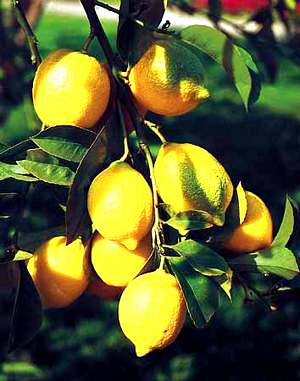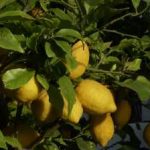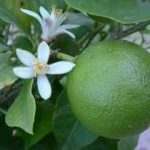This article on growing citrus fruit is by Dick Handscombe who retired to Spain where he enjoys living a self-sufficient life and writing on gardening in Spain and other subjects. Here he considers the secrets of successful citrus fruit growing.
Introduction to Growing Citrus Fruits
 We have recently noted that there is an increasing interest in growing citrus trees, especially growing oranges and lemons, in the UK and that a number of garden centres are expanding their stocking of citrus trees to stimulate and satisfy this interest.
We have recently noted that there is an increasing interest in growing citrus trees, especially growing oranges and lemons, in the UK and that a number of garden centres are expanding their stocking of citrus trees to stimulate and satisfy this interest.
Victorian gardeners grew them – generally in hothouses – so why not now with the possibility of the effect of global warming in the warmer counties or under the winter pool cover alongside over wintering vegetables.
In theory it’s a great idea but we do observe in Spain that well over half of the expatriates who have planted citrus trees are not happy with the yields of oranges, lemons and grapefruits etc they achieve.
Indeed such problems led us to write the best selling book ‘ Growing Healthy Fruit in Spain – From strawberries to oranges and water melons’. We therefore set out some basic success factors below.
Some citrus success factors – 10 tips for growing citrus fruit
Buy early or midseason ripening varieties. Early oranges can ripen by the year end and late ones can still be harvested in June here in Spain. They will still be on the trees when they are in flower and new fruits are forming.
Recognise that frost vulnerabilities are as follows:
- Orange – medium
- Mandarin – medium
- Lemon – medium/high
- Satsuma – medium/low
- Kumquat – low/medium
Position the trees in containers or in the open ground in sunny positions.
Take the trees indoors or wrap in fleece and bubble wrap in the winter if you have anything more than light frosts. Of course is you have a large Victorian house which still has its original orangery that’s great.
Plant new trees in enriched soil with roots spread out.
Enrich the soil in the open garden and in containers with well rotted manures before planting citrus trees and don’t burn the delicate young roots by using strong inorganic chemical fertilizers.
Don’t be in a haste to shape the tree. After two years the young tree will have developed a number of strong branches suitable for being pruned as the heart of the maturing tree.
Spray against bugs and sooty leaves with ecological insecticides and fungicides so that you are able to harvest oranges untainted by residual chemicals.
Don’t harvest in one go as happens in commercial orange groves. Recognise that a truly ripe orange is sweet. The first really ripe fruit will be on the lower branches on the south side where they benefit from direct sunlight and reflected heat from the ground. The last to be ripe will be within the foliage on the north side.






